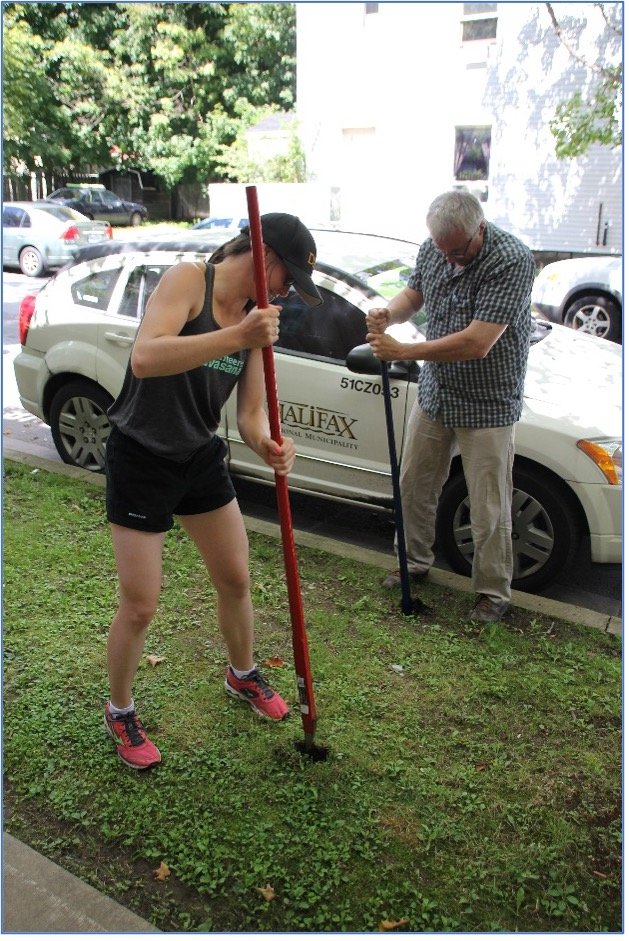Role of Nutrient Deficiencies in Urban Tree Death
Peter Duinker, Halifax Tree Project
2022-01-23
The urban-forest literature on this topic is sparse. Nutrient shortages may not outright kill a tree but, as with any organism, if it is unhealthy because certain nutrients are in short supply, the tree becomes susceptible to other stressors that may ultimately be tree killers.
For insight, I turned to a recent paper by Deborah Hilbert and colleagues, published in 2019 in the journal Arboriculture and Urban Forestry and titled “Urban Tree Mortality: A Literature Review”. In the paper, the authors presented a new framework for tree decline based partly on Manion’s (1981) famous disease-decline model for trees. The framework divides the factors responsible for bringing a tree to death into human and non-human factors, and further orders them temporally into groups called predisposing, inciting, and contributing. Interestingly, nutrient deficiencies are not directly mentioned among the factors, but I assume that the non-human predisposing factor called “site characteristics” is where nutrient deficiencies would come into play.
Thus, Hilbert and colleagues confirm that poor site conditions, including nutrient deficiencies, can predispose a tree to other factors that can kill it. Figuring out what made a tree die can sometimes border on the ridiculously obvious (e.g., it was cut down to make way for infrastructure development) to the incredibly difficult (as when several hard-to-see characteristics combine cumulatively to bring a tree to death). The best I can do for this article is to deliver a wee sad story about a streetside sugar maple tree in the middle of the Halifax peninsula.
Photo 1: A sugar-maple tree in distress (photo by P. Duinker, summer 2015)
Sugar maple (Acer saccharum Marsh.; see an earlier article in the street-tree section on this website) is relatively uncommon as a street tree in Halifax. Previous urban foresters avoided it for reasons unknown to me, but I’ve heard them say it was not a great competitor in the harsh street environment. This would mean that many that were planted died prematurely and did not reach a fulsome size and age. So, I cherish the few mature sugar maples we do have in Halifax - the species defines so much about Canada, and besides, it was my favourite climbing tree as a child.
My strolls through the streets of Halifax brought me into contact with a sugar-maple tree at the corner of Gladstone and Charles Streets. Every time I walked that way, I would take stock of the tree’s apparent condition. I measured its diameter at breast height at 50 cm, estimated its height at about 15 m, and measured the tree lawn it had all to itself at about 23 square metres. Over the years leading up to 2015, I noticed a thinning of the upper crown – there was dieback from the branch tips inward (see photo). I recalled the famous maple decline of the early 1980s in southern Quebec and Ontario – people blamed acid rain, they blamed bad sugar-bush management, and they blamed weather anomalies. I didn’t think we had any of these issues in relation to this street tree, so I conferred with urban-forester John Simmons and soils professor David Burton at Dalhousie’s Faculty of Agriculture. John suggested a possible nutrient deficiency, so we sent foliar samples to David for nutrient-content analysis.
Of interest were calcium, magnesium, and manganese. The analysis showed that while this tree’s nutrient content was in the low part of the healthy range for calcium and magnesium, as compared to woodland sugar maples in Nova Scotia, it was below the healthy range for manganese. John suggested an application of pelletized lime which contains an abundance of calcium and magnesium and also trace amounts of manganese. We implemented that treatment at a rate of 7 tonnes/hectare (see photos) in August 2015.
Photo 2: Liming application (photo by P. Duinker, August 2015)
I had high hopes for the treatment but saw no improvements in the tree’s canopy over the next couple of years. I thought we might have a chance to prune the tree to see if it would respond favourably, but alas, one day a couple of years ago I passed by its spot and noticed it was gone. Fresh sawdust lay strewn about from all the chainsaw cuts necessary to remove the tree. Shortly thereafter the stump was ground out and the turf repaired. That plantable spot has yet to be addressed in the planting queue.
The question remains, without a clear answer – was the tree succumbing principally to a nutrient deficiency? We’ll never really know, for sure now that the tree is gone but even if we had studied it more thoroughly and for a longer period, we probably would still be guessing.
In closing, when it comes to site characteristics, street-side trees often have about the worst nutrient conditions you can imagine. Rarely is proper soil brought in when streets are constructed or reconstructed, although urban foresters across Canada, including here in Halifax, are tightening up the specifications so that new trees, by regulation, get at least a partly decent soil environment in which to develop to maturity. To me, it’s a bit surprising, when you look at the kind of site conditions into which we plant street trees, that so many of them actually survive their first few years of life there. So while soil nutrients may not be there in ideal concentrations, it’s probably rare for nutrient deficiencies to be responsible for bringing a tree down.
Photo 3: Liming application (photo by P. Duinker, August 2015)
References
Hilbert, D.R., L.A. Roman, A.K. Koeser, J. Vogt, and N.S. van Doorn. 2019. Urban tree mortality: a literature review. Arboriculture and Urban Forestry 45(5):167-200.
Manion, P.D. 1981. Tree Disease Concepts. Prentice-Hall, Englewood Cliffs, NJ.


